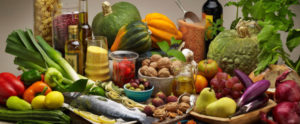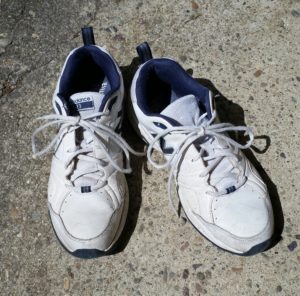 A big question for many adults is: how can one age well and live to a ripe old age? The author of the book The Blue Zones has dedicated a lot of time to studying communities throughout the world where there are a lot of centanarians and they age well (healthy). What are their secrets to aging well? The answer seems to be: while the diets vary, overall they have a lot of plant based whole foods, they have a lot of physical activity, are committed to their families, take time to de-stress, and they have social networks with healthy behaviors. From NPR:
A big question for many adults is: how can one age well and live to a ripe old age? The author of the book The Blue Zones has dedicated a lot of time to studying communities throughout the world where there are a lot of centanarians and they age well (healthy). What are their secrets to aging well? The answer seems to be: while the diets vary, overall they have a lot of plant based whole foods, they have a lot of physical activity, are committed to their families, take time to de-stress, and they have social networks with healthy behaviors. From NPR:
Eating To Break 100: Longevity Diet Tips From The Blue Zones
Want to live to be 100? It's tempting to think that with enough omega-3s, kale and blueberries, you could eat your way there. But one of the key takeaways from a new book on how to eat and live like "the world's healthiest people" is that longevity is not just about food.
The people who live in the Blue Zones — five regions in Europe, Latin America, Asia and the U.S. researchers have identified as having the highest concentrations of centenarians in the world — move their bodies a lot. They have social circles that reinforce healthy behaviors. They take time to de-stress. They're part of communities, often religious ones. And they're committed to their families.
But what they put in their mouths, how much and when is worth a close look, too. And that's why Dan Buettner, a National Geographic explorer and author who struck out on a quest in 2000 to find the lifestyle secrets to longevity, has written a follow up to his original book on the subject. The new book, called The Blue Zones Solution, is aimed at Americans, and is mostly about eating.
Why should we pay attention to what the people in the relatively isolated Blue Zone communities eat? Because, as Buettner writes, their more traditional diets harken back to an era before we Americans were inundated with greasy fast food and sugar. And to qualify as a Blue Zone, these communities also have to be largely free of afflictions like heart disease, obesity, cancer and diabetes. So clearly they're doing something right.
But in a nutshell,Buettner in 2004 rounded up a bunch of anthropologists, demographers, epidemiologists and other researchers to travel around the world to study communities with surprisingly high percentages of centenarians. He and the scientists interviewed hundreds of people who'd made it to age 100 about how they lived, then did a lot of number crunching to figure out what they had in common. A year after that book was published, the team announced they'd narrowed it down to five places that met all their criteria. They gave them official Blue Zone status: Ikaria, Greece; Okinawa, Japan; Ogliastra Region, Sardinia; Loma Linda, Calif.; and Nicoya Peninsula, Costa Rica.
In the new book, which was released April 7, Buettner distills the researchers' findings on what all the Blue Zones share when it comes to their diet. Here's a taste: - Stop eating when your stomach is 80 percent full to avoid weight gain. - Eat the smallest meal of the day in the late afternoon or evening. - Eat mostly plants, especially beans. And eat meat rarely, in small portions of 3 to 4 ounces. Blue Zoners eat portions this size just five times a month, on average. - Drink alcohol moderately and regularly, i.e. 1-2 glasses a day.
Ikaria, Greece You may remember this Blue Zone from Buettner's wonderful 2012 New York Times Magazine article entitled "The Island Where People Forget To Die." As we've reported, health researchers have long praised the Mediterranean diet for promoting brain and physical health and keeping chronic diseases at bay.
"Their tradition of preparing the right foods, in the right way, I believe, has a lot to do with the island's longevity," writes Buettner. And "what set it apart from other places in the region was its emphasis on potatoes, goat's milk, honey, legumes (especially garbanzo beans, black-eyed peas, and lentils), wild greens, some fruit and relatively small amounts of fish."Ikaria has a few more "top longevity foods:" feta cheese, lemons and herbs like sage and marjoram that Ikarians use in their daily tea...The Ikarians do eat some goat meat, but not often.
Sardinia, Italy ...Buettner writes that the Sardinians explain their exceptional longevity with their assets such as "clean air," "locally produced wine," or because they "make love every Sunday." But when Buettner brought along a researcher to dig deeper, they found that pastoralism, or shepherding livestock from the mountains to the plains, was most highly correlated with reaching 100.
So what are those ancient Sardinian shepherds eating? You guessed it: goat's milk and sheep's cheese — some 15 pounds of cheese per year, on average. Also, a moderate amount of carbs to go with it, like flat bread, sourdough bread and barley. And to balance those two food groups out, Sardinian centenarians also eat plenty of fennel, fava beans, chickpeas, tomatoes, almonds, milk thistle tea and wine from Grenache grapes.
Loma Linda, Calif. There's a Blue Zone community in the U.S.? We were as shocked to learn this as you may be. Its members are Seventh-day Adventists who shun smoking, drinking and dancing and avoid TV, movies and other media distractions. They also follow a "biblical" diet focused on grains, fruits, nuts and vegetables, and drink only water. ...Another key insight? Pesco-vegetarians in the community, who ate a plant-based diet with up to one serving of fish a day, lived longer than vegan Adventists.Their top foods include avocados, salmon, nuts, beans, oatmeal, whole wheat bread and soy milk.
 Could this be true? Eating fermented foods linked to fewer social anxiety symptoms? Fifteen years ago before the world of bacteria could be explored with state of the art genetic tests, this would have sounded too woo-woo. And now we say - could be. Next the researchers will test an experimental version of this study to see if they find causation. Right now all we can say they are linked or that we see an association.
Could this be true? Eating fermented foods linked to fewer social anxiety symptoms? Fifteen years ago before the world of bacteria could be explored with state of the art genetic tests, this would have sounded too woo-woo. And now we say - could be. Next the researchers will test an experimental version of this study to see if they find causation. Right now all we can say they are linked or that we see an association.
 Study after study finds health benefits from exercise of all sorts, but what about those people who are so fit that they run marathons longer than normal marathons of 26.2 miles?
Study after study finds health benefits from exercise of all sorts, but what about those people who are so fit that they run marathons longer than normal marathons of 26.2 miles?
 There has been a lot of discussion in the last few years of our
There has been a lot of discussion in the last few years of our